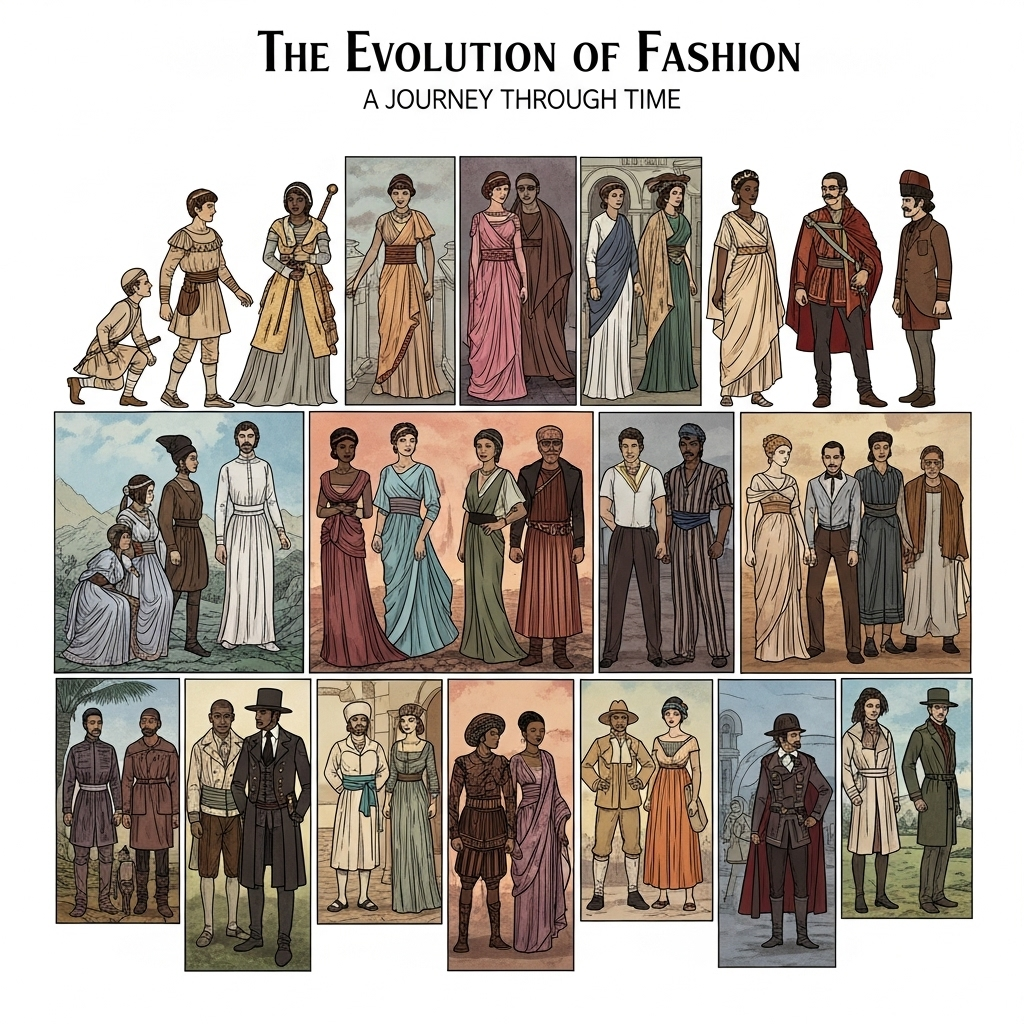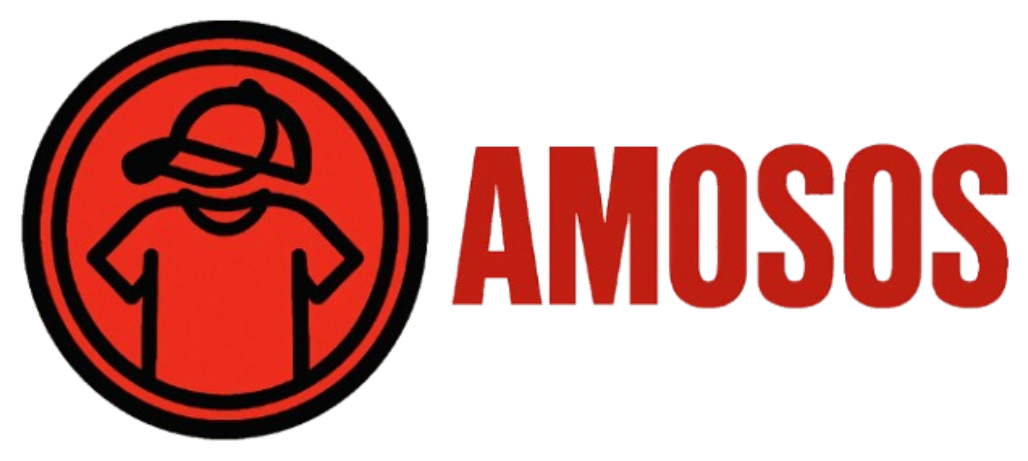Blog
The Evolution of Fashion: A Journey Through Time

Fashion, far from being a mere collection of garments, is a dynamic reflection of human history, society, and culture. It’s a silent language that chronicles our desires, our struggles, and our triumphs. From the practical coverings of ancient civilizations to the avant-garde creations gracing contemporary runways, the journey of fashion is a compelling narrative of innovation, rebellion, and constant reinvention. Understanding this evolution isn’t just about appreciating aesthetics; it’s about grasping the intricate ways in which clothing has shaped and been shaped by the human experience.
From Ancient Practicality to Symbolic Status
In the earliest chapters of human history, clothing was primarily about functionality and protection. The simple loincloths of prehistoric times or the draped linen of Ancient Egypt served to shield against the elements. Yet, even then, the seeds of fashion as a social signifier were sown. In Egypt, intricate pleating, elaborate headdresses, and the use of fine, sheer linen indicated status and wealth. Similarly, in Ancient Greece and Rome, draped garments like the chiton, toga, and stola, while seemingly simple, were carefully arranged to convey social standing, civic duty, and even philosophical ideals. The purity of white wool in Roman togas spoke of citizenship, while the purple stripe denoted senatorial rank. Fashion, from its inception, was intertwined with identity and hierarchy.
The Grandeur and Constraints of Medieval and Renaissance Eras
The Medieval period saw a shift towards more tailored garments, influenced by practical needs for warmth and protection in cooler climates. However, fashion remained heavily dictated by social class and sumptuary laws, which explicitly controlled what different ranks of society could wear. Peasants wore simple, undyed wool, while the nobility adorned themselves in rich silks, velvets, and furs, often in vibrant, expensive dyes like cochineal red or indigo blue. The silhouette was generally long and flowing, with practical layering.
The Renaissance brought a resurgence of interest in classical ideals, but also an explosion of opulent fashion. With increased trade and wealth, particularly in Italy and later Northern Europe, fabrics became richer and more elaborate. Think of the broad, squared shoulders and padded doublets for men, and the voluminous, structured gowns with wide, intricate sleeves for women, often supported by rigid undergarments. This was an era of display, where clothing was a canvas for showcasing wealth, artistic skill, and power. The Spanish court, with its rigid ruffs and farthingales, introduced a sense of stiff formality that contrasted with the more flowing Italian styles.
Extravagance, Revolution, and Romanticism: 17th to 19th Centuries
The 17th century, dominated by the Baroque style, saw fashion become even more elaborate. Men wore ornate coats, breeches, and waistcoats adorned with lace, ribbons, and elaborate embroidery. Women’s gowns featured wider skirts, often supported by hoops, and increasingly intricate bodices and décolletage. The court of Louis XIV in France was a beacon of lavishness, where fashion was a tool of political control and social aspiration. Wigs became enormous, and powdered faces were the norm.
By the 18th century, the Rococo era softened the grandeur into a more delicate, playful extravagance. Pastel colors, floral motifs, and lighter fabrics became popular. Women’s gowns, particularly the robe à la française, featured flowing back pleats and wider, more elaborate panniers. Men’s fashion mirrored this, with lighter silks, embroidered waistcoats, and powdered perukes. However, this aristocratic opulence was brutally interrupted by the French Revolution. Fashion underwent a radical transformation, symbolizing a rejection of the old order. Simple, neoclassical styles inspired by ancient Greece and Rome emerged, with flowing white muslin dresses (chemise à la grecque) for women and less ornate, more practical attire for men.
The 19th century brought significant changes, driven by industrialization and evolving social norms. The Victorian era (mid to late 19th century) was characterized by modesty, formality, and a focus on domesticity for women. Corsets cinched waists, skirts grew voluminous with crinolines and bustles, and intricate detailing like lace, ruffles, and embroidery were prevalent. For men, the dark, tailored suit became the uniform of the modern businessman, reflecting an era of industrial expansion and a more sober approach to dress. Towards the end of the century, the Edwardian era saw a slightly more relaxed silhouette, but still maintained a sense of formality and elegance. This period also witnessed the rise of mass production, making clothing more accessible to a wider population and beginning to lay the groundwork for modern consumerism.
A Century of Revolution: The 20th Century’s Fashion Kaleidoscope
The 20th century was arguably the most transformative period in fashion history, mirroring unprecedented social, political, and technological shifts.
The 1920s roared with liberation. The flapper era saw women shed corsets, raise hemlines to the knee, and embrace looser, boyish silhouettes. This was a direct defiance of Victorian constraints, symbolizing newfound freedom for women. Short hair, cloche hats, and beaded dresses epitomized the Jazz Age.
The 1930s and 1940s were shaped by economic depression and world war. Fashion became more practical and functional. The Great Depression led to more subdued styles and a focus on durability. During World War II, rationing and utility dictated designs, with squared shoulders and streamlined silhouettes becoming common. Hollywood glamour, however, provided an escapism, with stars influencing elegant, sophisticated looks.
The 1950s, post-war prosperity brought a return to idealized femininity with Christian Dior’s “New Look”. This featured cinched waists, full skirts, and rounded shoulders, celebrating a return to luxury and a more opulent silhouette. Simultaneously, the rise of youth culture began to challenge established norms, with teenagers developing their own distinct styles.
The 1960s exploded with youth rebellion and individualism. The Mod movement in London, the miniskirt by Mary Quant, and the influence of pop art and psychedelic culture led to bold colors, geometric patterns, and adventurous silhouettes. This was a time of breaking rules and celebrating personal expression.
The 1970s were a melting pot of diverse subcultures. From the flowing, natural styles of hippies to the glam rock extravagance, the rebellious anti-fashion of punk, and the dazzling sparkle of disco, fashion fragmented into myriad expressions of identity and music.
The 1980s were defined by excess and “power dressing.” Broad shoulders, bold colors, designer labels, and a focus on status symbols dominated. Aerobics wear and hip-hop culture also began to influence mainstream fashion. The 1990s swung towards minimalism, grunge, and a more understated aesthetic. Brands like Calvin Klein and Helmut Lang championed clean lines and a pared-down look, while grunge embraced an anti-fashion, DIY ethos.
The 21st Century: Blurring Lines and Digital Frontiers
The 21st century has seen an acceleration of fashion trends, driven by globalization, technology, and an increasing awareness of social and environmental issues.
Blurring of Lines: Traditional gender distinctions in clothing are dissolving, giving rise to gender-neutral and unisex fashion. The lines between formal and casual, high fashion and streetwear, are increasingly blurred. Sneakers are worn with suits, and designer hoodies command luxury prices.
Sustainability and Ethics: A growing consciousness about the environmental and social impact of the industry has led to the rise of sustainable and ethical fashion. Consumers are increasingly demanding transparency, fair labor practices, and eco-friendly materials. This includes a push for circular fashion, emphasizing reduction, reuse, and recycling.
Technology Integration: Technology is revolutionizing fashion at every stage. From 3D printing for custom designs and rapid prototyping, to AI for trend forecasting and personalized recommendations, and virtual try-on experiences powered by AR/VR. The emergence of digital fashion and NFTs is creating entirely new avenues for expression and commerce in the metaverse.
Streetwear’s Dominance: What began as a niche subculture has become a global phenomenon, profoundly influencing luxury brands and mainstream fashion. The emphasis on comfort, exclusivity (through limited drops), and collaborations has reshaped the industry’s business model.
Inclusivity: There’s a growing demand for fashion to be more inclusive, representing diverse body types, ages, ethnicities, and abilities in campaigns and on runways.
The Cyclical Nature and Enduring Power of Fashion
One of the fascinating aspects of fashion is its cyclical nature. Trends from past decades are constantly reinterpreted and reinvented for contemporary tastes. The current fascination with Y2K fashion, for instance, is a testament to this continuous loop. Yet, each revival carries new meaning, filtered through the lens of modern sensibilities and technologies.
Ultimately, fashion is more than just fabric and thread. It’s a powerful form of communication, a reflection of human creativity, and a tangible archive of our collective journey. From the utilitarian garments of our ancestors to the digitally rendered outfits of the metaverse, fashion continues to evolve, constantly adapting to and influencing the world around us. It remains an enduring testament to our innate desire for self-expression, identity, and connection.
